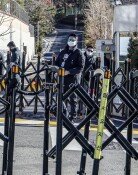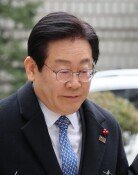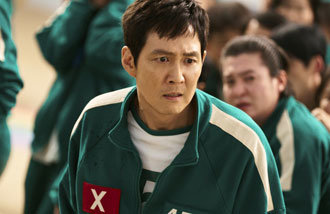Warriors in war against COVID-19 amid heat wave
Warriors in war against COVID-19 amid heat wave
Posted July. 19, 2021 07:27,
Updated July. 19, 2021 07:27
In the aftermath of the COVID-19 pandemic, responders and public health providers struggle with a dual burden of fatigue and heat waves. Onsite health workers spend endless days of a scorching heat at temporary test stations crowded with a massive influx of citizens. A public health officer, exhausted, collapsed in the middle of a hot afternoon at a temporary test station in Gwanak District, Seoul.
With a special quarantine measure put in place this month in the Seoul metropolitan area, 32 more temporary test stations have been installed to make the nationwide number go up to 162. The sizzling heat of July is too fierce for even shading screens and cooling equipment to keep health workers intact. With temperatures exceeding 30 degrees Celsius, they end up sweating like a pig in a full body protective suit or in a long-sleeve coat with a face mask and a face shield on. Staffs at test stations are too busy to have any chance to go to the toilet on the job.
Weather forecasts say that the Korean peninsula will be blanketed with a heat dome this week to only increase temperatures further, raising health concerns about medical professionals at the forefronts of the COVID-19 pandemic. Not only public health workers at test stations but also epidemiological investigators on the site, medical professionals treating and vaccinating citizens at medical centers and community health centers, and staffs in charge of quarantine facilities and gene sampling analysis fight hard against fatigue and heat waves, making sacrifices to prevent the pandemic situation from getting worse.
South Korean President Moon Jae-in made a visit to a test station at Samseong Station on Sunday, saying, “I feel deeply sorry about such a heartbreaking situation.” The government advised municipalities to reduce the operation of test stations between 2 p.m. and 4 p.m. when temperatures are at the peak of the day and to prepare enough space for onsite workers to rest. It is a responsibility of the government and municipalities to add more staffs to the site so that health workers can have rest in turn and to execute a budget required to ramp up cooling equipment.
Ultimately, what matters is to contain the spread of COVID-19 so that quarantine needs can decrease to allow health providers to stay relaxed. However, the coronavirus does never seem to stop in the Seoul metropolitan area and the number of confirmed cases sharply increases across the rest of the nation, leading the government to strengthen quarantine measures such as a nationwide ban on gatherings of more than four people. Citizens are advised to keep quarantine rules strictly and minimize personal contact while the government has to beef up vaccination supply efforts. It is the best option to make to rein on the 4th wave and help out medical workers on the verge.







